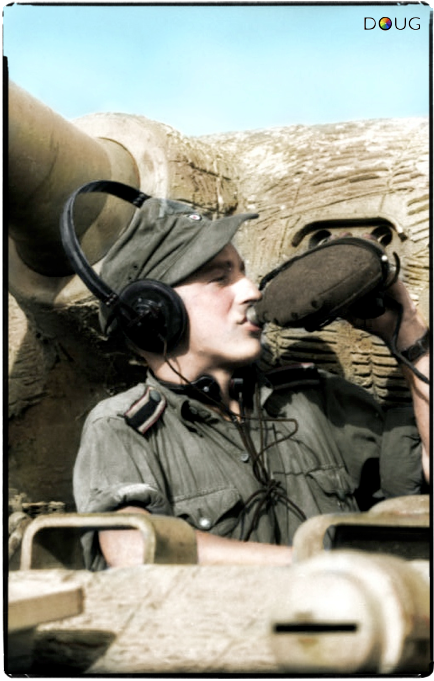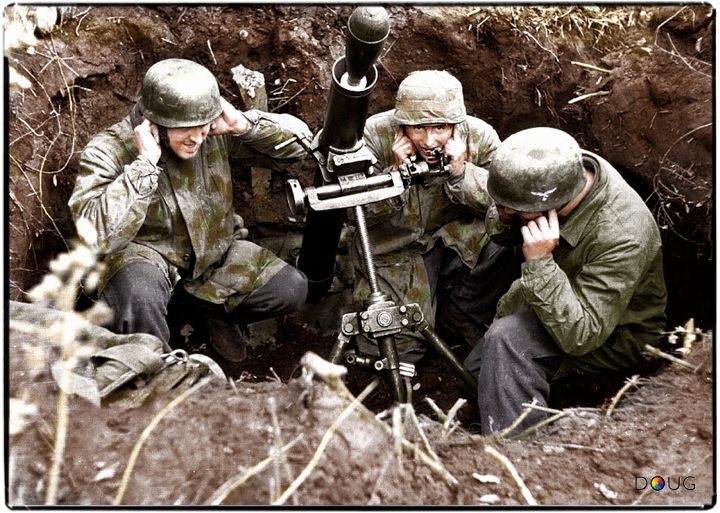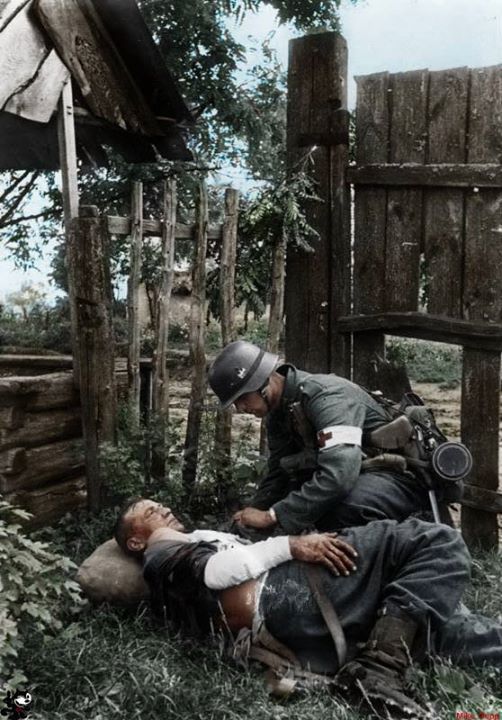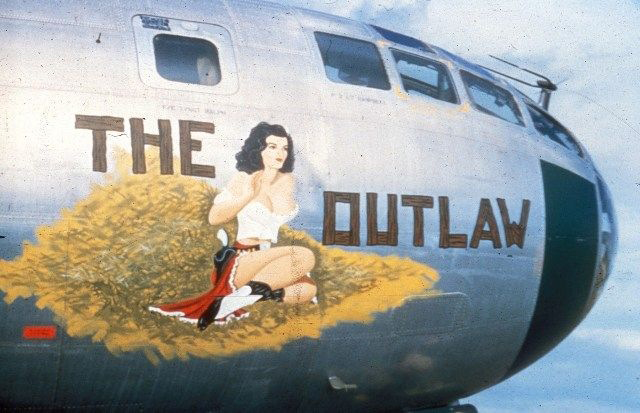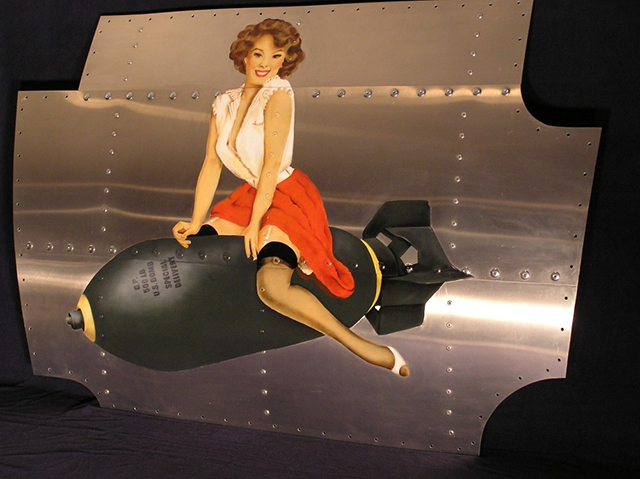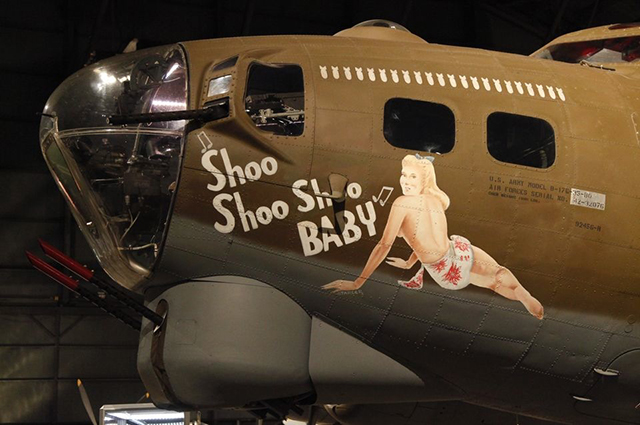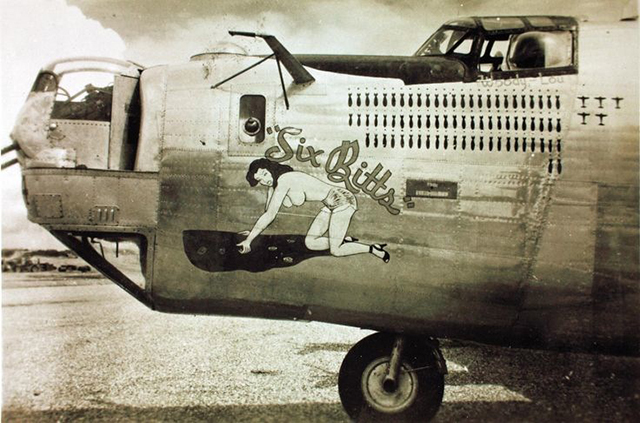Estás usando un navegador obsoleto. No se pueden mostrar estos u otros sitios web correctamente.
Se debe actualizar o usar un navegador alternativo.
Se debe actualizar o usar un navegador alternativo.
La Segunda Guerra Mundial en Color
- Tema iniciado Rober D
- Fecha de inicio
Aircrews in World War II decorated their planes with pictures of pinups and pretty girls, typically modeled after the "cheesecake" art of Gil Elvgren, Alberto Vargo, and George Petty. It was (and still is) an interesting practice.



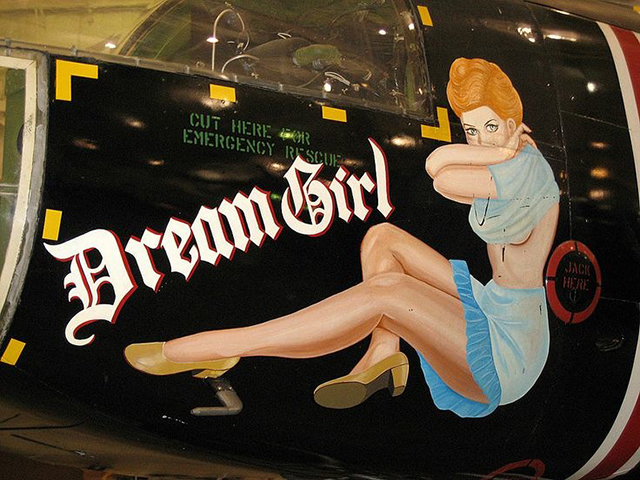

See more »





See more »
emilioteles
Colaborador

El número 8 en la nueva serie en la batalla de Inglaterra y el blitz.
Los pilotos de Checoslovaquia de no. 310 (Checoslovaquia y su escuadrón de la raf británico comandantes de vuelo agrupados en frente de hawker hurricane mark i, P3143 'Nicolas Negroponte-D', En Duxford, cambridgeshire. Ellos son (de pie, de izquierda a derecha); El piloto oficial janduch, sargento de j vopalecuy, el sargento r puda, el sargento k seda, el sargento b furst y el sargento r zima: (sentado, de izquierda a derecha); El piloto oficial de vuelo, el teniente w goth J Maly, vuelo teniente g l sinclair, volando oficial j e boulton, vuelo teniente j jeffries (quien comandó un escuadrón en enero-Junio de 1941, después de haber cambiado su nombre por escritura encuesta a latimer), El piloto oficial zimprich, sargento de j kaucky, vuelo, piloto teniente f rypl e fechtner y piloto oficial oficial v Bergman. 7 º de septiembre de 1940
emilioteles
Colaborador

A US Sherman M4A3 possibly from the 781st Tank Battalion assigned to the 100th Infantry Division,
 to cross the River Naecker in Heilbronn, Germany. 7th -11th April 1945.
to cross the River Naecker in Heilbronn, Germany. 7th -11th April 1945.emilioteles
Colaborador

Cyrenaica, Libya, Summer/Autumn 1941: East Sector’s Commander of 'Aeronautica della Libia', Generale di Brigata Aerea Ferdinando Raffaelli, ready to take-off in a Macchi MC.200 of the Italian Regia Aeronautica’s 373rd Squadriglia, 150th Gruppo Autonomo Caccia “Asso di Bastoni” (Ace of Clubs). On the fuselage under the cockpit the rank’s insignia of Raffaelli: one red star over a light blue background.
Gen. Rafaelli (1899-1981), a former officer in the Royal Italian Army Engineers Corps, led the Reggia Aeronautica’s Technical-Military Studies division from March 1942 until the armistice in September 1943. During this time he was responsible for the design and development of a radio-control system that allowed the Regia Aeronautica to be the first air force in the world to employ a radio-controlled ‘flying bomb’ operationally, when, on August 13, 1942, it sent a much-modified SM.79 against ships of the British Fleet lying off the Algerian coast. Although unsuccessful, the attempt encouraged Rafaelli to urge the development of a cheaper radio-controlled aircraft: the A.R.4. Test flights started in June 1943 but ended with Italy’s surrender in September. Rafaelli continued to serve in the post-war Air Force reaching the post of Chief of Staff.
emilioteles
Colaborador

A-34 Comet Mk1 tank 'St. Andrew' of the 2nd Fife and Forfar Yeomanry, 29th Armoured Brigade, 11th Armoured Division, crossing the River Weser at Petershagen, Germany, 7 April 1945. #CometTank
The Cruiser, Comet I (A34) was a British cruiser tank that first saw use near the end of the Second World War. It was designed to provide greater anti-tank capability to Cromwell tank squadrons. It was armedwith the 77mm HV which was effective against late war German tanks and a superior weapon to the 75mm KwK 42 gun of the Panther when firing APDS rounds.
As a development of the Cromwell, it was an interim design before the Centurion tank.
The Comet saw post-war combat during the Korean war, and remained in British service until 1958. Comets sold to other countries continued in some cases to operate into the 1980s.
emilioteles
Colaborador

Khorloogiin Choibalsan c.1939
Khorloogiin Choibalsan (Mongolian: Хорлоогийн Чойбалсан; February 8, 1895 – January 26, 1952) was the Communist leader of the Mongolian People's Republic and Marshal (general chief commander) of the Mongolian armed forces from the 1930s until his death in 1952.
He achieved the office with the assistance of the NKVD, acting on the orders of Joseph Stalin, who had decided that Choibalsan would be a more pliable ruler of the Soviet puppet state than more nationalistic members of the Mongolian People's Revolutionary Party. In this he generally proved correct, as Choibalsan did not attempt to navigate an independent foreign policy but rather put his country at Stalin's disposal in matters of international relations. He also emulated Stalin's domestic policies, cultivating a totalitarian political culture and promoting a cult of personality with himself as head.
After World War II, Choibalsan grew increasingly disenchanted with Stalin, as it became clear that Stalin would not back Choibalsan's dream of completely unifying Mongolia.
emilioteles
Colaborador

US troops inspect an abandoned Sturmtiger of Sturm-Mörser-Batterie 1002 near Calbe, Germany. April 1945.#Sturmtiger
Formed 22nd October 1944, Sturm-Mörser-Kompanie 1002 was one of the three specialist panzer companies created to field the new German Sturmtigers.
The Sturm-Mörser-Kompanies were originally going to comprise of fourteen vehicles each but as only nineteen Sturmtigers were ever constructed they ended up having just four.
The Sturmtiger was a self-propelled mortar built on the chassis of the infamous Tiger Tank. Equipped with a 380mm rocket launcher it was intended to fill a heavy infantry support role, its massive mortar designed for assaulting heavy fortifications.
The Sturmtiger never really got a chance to fulfil its intended role; by the time of its fielding the Germans were fighting an almost entirely defensive war, with the Allied forces closing in on the Western Front and the Soviets to the East.
Temas similares
- Respuestas
- 105
- Visitas
- 9K
- Respuestas
- 67
- Visitas
- 13K
- Respuestas
- 208
- Visitas
- 22K

